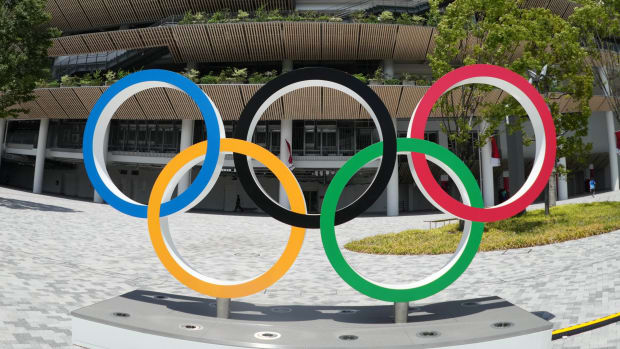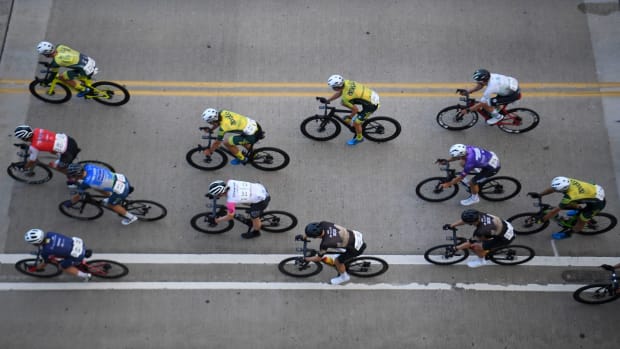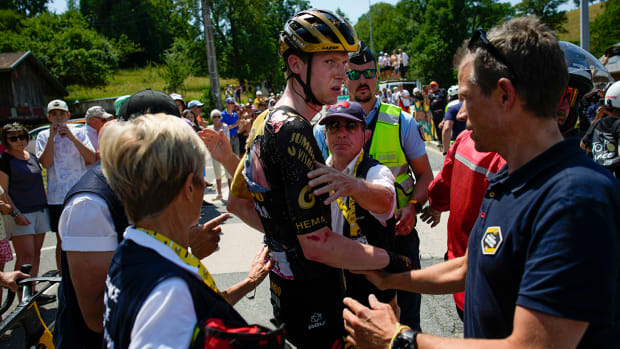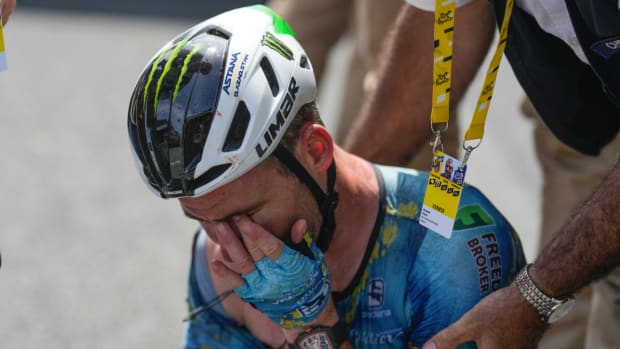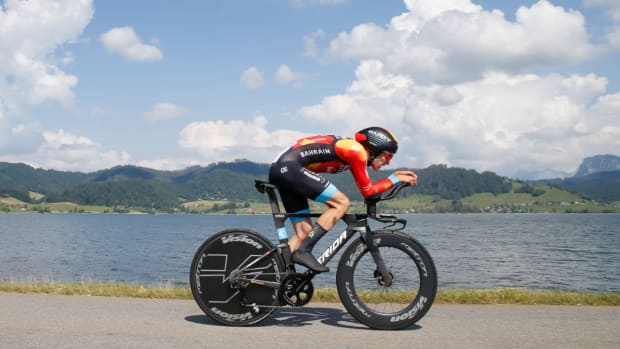TASTE OF THE TOUR: Pig's head sausage and stinky cheese
Take your passport - and a nose-clip - for Monday's Stage 3 of the Tour de France because it hits three countries and a region with super-stinky cheese.
Here is your gastronomic, sporting and cultural guide to the 212.5 kilometers (132 miles) between Verviers in Belgium and the finish in Longwy, France:
REGION: After Saturday's opening stage in Germany and Stage 2 that finished in Belgium, the Tour comes home to France, via the Grand Duchy of Luxembourg. The bumpy north-south route includes five short, sharp hills that should make for interesting racing, likely breaking up the peloton into multiple groups.
Contenders for overall victory will be working too hard through the valleys and hills to care about the sights they'll ride through or skirt on the way: the Spa-Francorchamps race track that hosts the Formula One Belgium Grand Prix, battlefields from the World War II ''Battle of the Bulge'' and landlocked Luxembourg, the world's only Grand Duchy and one of the wealthiest countries on a per-head basis.
PLAT DU JOUR: For the sweet-toothed, the start-town of Verviers has a chocolate festival - scheduled for October this year. The 2016 edition was marked by the creation of what Belgium media said was a record-breaking chocolate eclair - more than 600 meters (2,000 feet) long, including 300 liters (80 gallons) of milk and 120 kilograms (265 pounds) of butter and flour.
For saltier tastes, try lefgot, Verviers' creamy pate sausage.
''It's made from pig's head, liver, spiced bread and dried raisins,'' says Anais Goeders, who runs the Goeders Butchery in Verviers with her husband, Charles-Etienne.
The meats are cooked and then ground into a paste with the other ingredients. The mixture is then fed into sausage skins, and the sausages boiled in water. Goeders says the flavor is both sweet and salty.
''It's eaten cold,'' usually spread onto bread, she said in a phone interview. ''It's creamy, because it's made with liver.''
''It's usually something you would eat at midday,'' she added. ''I'd suggest eating it with a red wine.''
For the truly brave, Herve cheese, made from cow's milk in the northern surrounds of Verviers, rivals the more famous Epoisses from France's Burgundy region for its sharp smell and bite on the tongue.
HISTORY: Several castles dot the route, including the 12th century Clervaux chateau that was severely damaged during the 1944-1945 Nazi German counter-offensive known as the ''Battle of the Bulge,'' and the Chateau de Wiltz, which was repeatedly destroyed and rebuilt over the centuries. The race passes close to Bastogne, the Belgian town where the commander of besieged U.S. troops in the bitter winter of 1944 replied ''Nuts!'' when asked to surrender by German forces.
VIN DU JOUR: Luxembourg's wines - mostly white - aren't as world-famous as those from neighboring France but some are well-regarded, including sparkling wines. The first wine of the season is the ''Fiederwaissen,'' which translates as white feather. The short fermentation produces a fruity, slightly acidic beverage that is only available for about two weeks of the year.
STAT OF THE DAY: 11. The number of riders that the Tour's medical team said suffered scratches and other injuries in a crash shortly before the finish of a wet and slippery stage.
QUOTE OF THE DAY: ''Just lost a bit of skin.'' - three-time Tour champion Chris Froome, one of the riders who went down in the mass crash.
NEXT ORDER: Tuesday's Stage 4 starts and finishes in two spa towns, Mondorf-les-Bains in Luxembourg and Vittel in France. The largely flat 207.5-kilometer (129-mile) route, with just one hill of note, is likely to finish with another bunched sprint. But riders looking for individual glory may be tempted to go it alone and break away ahead of the pack - as Danish rider Nicki Sorensen did the last time the Tour stopped in Vittel in 2009.
